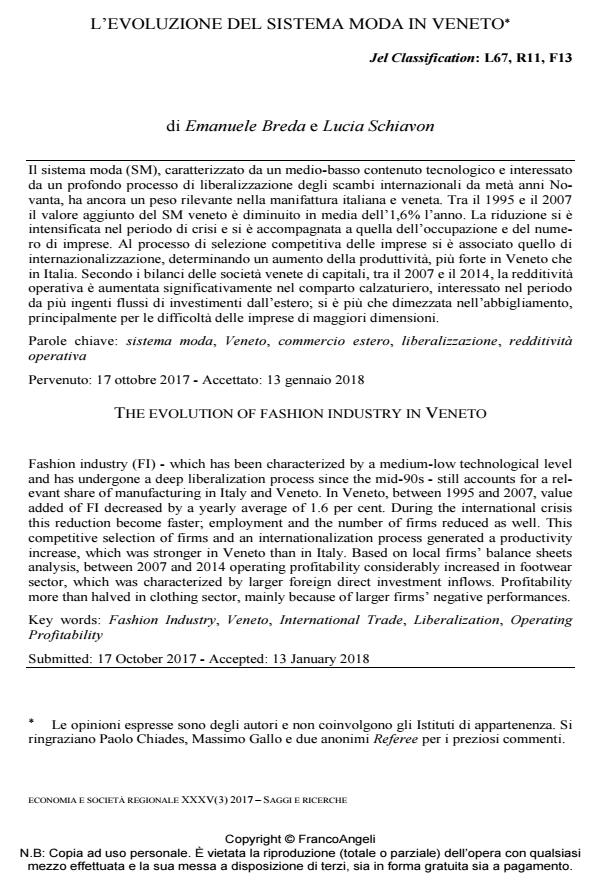The evolution of fashion industry in Veneto
Journal title ECONOMIA E SOCIETÀ REGIONALE
Author/s Emanuele Breda, Lucia Schiavon
Publishing Year 2018 Issue 2017/3
Language Italian Pages 22 P. 148-169 File size 339 KB
DOI 10.3280/ES2017-003008
DOI is like a bar code for intellectual property: to have more infomation
click here
Below, you can see the article first page
If you want to buy this article in PDF format, you can do it, following the instructions to buy download credits

FrancoAngeli is member of Publishers International Linking Association, Inc (PILA), a not-for-profit association which run the CrossRef service enabling links to and from online scholarly content.
Fashion industry (FI) - which has been characterized by a medium-low technological level and has undergone a deep liberalization process since the mid-90s - still accounts for a relevant share of manufacturing in Italy and Veneto. In Veneto, between 1995 and 2007, value added of FI decreased by a yearly average of 1.6 per cent. During the international crisis this reduction become faster; employment and the number of firms reduced as well. This competitive selection of firms and an internationalization process generated a productivity increase, which was stronger in Veneto than in Italy. Based on local firms’ balance sheets analysis, between 2007 and 2014 operating profitability considerably increased in footwear sector, which was characterized by larger foreign direct investment inflows. Profitability more than halved in clothing sector, mainly because of larger firms’ negative performances.
Keywords: Fashion Industry, Veneto, International Trade, Liberalization, Operating Profitability
Jel codes: L67, R11, F13
Emanuele Breda, Lucia Schiavon, L’evoluzione del sistema moda in Veneto in "ECONOMIA E SOCIETÀ REGIONALE " 3/2017, pp 148-169, DOI: 10.3280/ES2017-003008